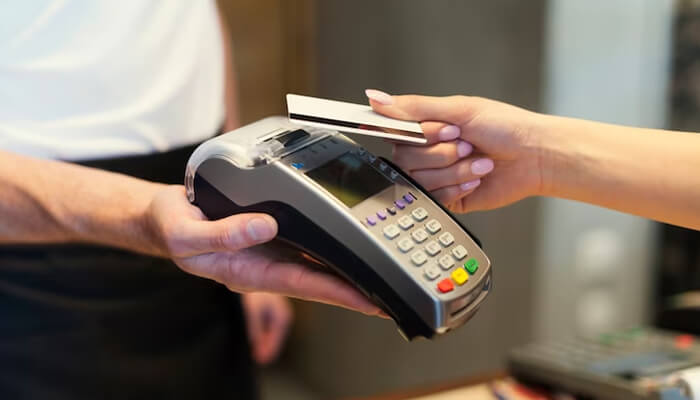Digital payments are estimated to reach $9.5 Trillion in 2023. To maintain a competitive edge and provide their customers with easy, secure payment processing system options, businesses of all sizes need a firm grasp of the principles of payment processing.
Payment processing system is essential for organizations that take client payments since it helps companies manage cash flow and customer happiness while reducing fraud threats. Companies must know the latest industry trends, legislation, and security requirements to remain competitive in today’s technological advancements and changing customer preferences in the payment sector.
This article discusses the components of a payment processing system, how it operates, the best practices for companies, and the significance of selecting the proper supplier.
An Overview of Payment Processing System
Payment processing is the series of steps to move money from a payer to a recipient safely. Transactions are often authorized, verified, and settled via electronic payment methods.
Credit cards, debit cards, mobile payments, digital wallets, and cryptocurrencies are some payment methods that may be processed via a payment gateway. Various organizations and individuals build and maintain these infrastructures, such as banks, financial institutions, payment processors, technology suppliers, enterprises, and regulatory agencies.
Significance of Online Payment Processing Service
Various technologies, services, and financial instruments enable quick and safe movement of payments between individuals or businesses (any physical or digital device used to perform cashless transactions, such as a credit or debit card). Trade, e-commerce, and economic expansion are all aided by payment processing systems. Nevertheless, the quality of a company’s customer service and its ability to participate in the global economy is directly proportional to the payment processing solutions it implements.
In addition, managing cash flow, customer satisfaction, and general company operations is greatly assisted by secure and dependable payment and outsource accounting processing for companies of all kinds. Furthermore, businesses can better serve their consumers and earn their confidence by accepting a wide range of payment methods, reflecting the preferences of their clientele. In addition, with a properly operating Payment processing system, the danger of fraud is decreased, data is protected, and all applicable legislation and industry requirements are met.
Changes in technology, consumer preferences, and the entry of new businesses have all contributed to a dynamic expansion of the payment processing industry in recent years. Innovative payment options, wider availability of financial services, and more robust market competition are all outcomes of these shifts. Companies and consumers may now benefit from payment-processing solutions that are quicker, more secure, and more convenient.
Processing Payments Online: How Does it Work?
The procedure involves a large number of individuals and organizations. Nevertheless, here’s how the whole payment processing thing goes down:
Initiation of Transactions
At the register store or via an electronic medium like an e-commerce website or mobile app, the consumer commences the payment process by entering their payment information.
Payment Processing Gateway
Customers’ payment details are sent safely to the payment gateway, which mediates between them, the company, and the payment processor once they have completed the checkout procedure. The payment gateway is accountable for encrypting and safely transmitting transaction data to the payment processor or acquiring bank.
Permission to Transact
After the payment gateway processes a transaction, the data is sent to the payment processor for verification. It then transmits the information about the transaction to the acquiring bank, which subsequently notifies the card network to verify and authorize the transaction.
Confirmation from The Issuing Bank
Next, the card network notifies the issuing bank of the transaction. The bank then further evaluates the account status of the customer’s account and checks the available amount or credit card limit before analyzing any possible hazard. Nevertheless, the decision of issuing banks to allow or reject the processed transaction depends upon such criteria.
Response to Authorization
Through the card network, the originating bank notifies the acquiring bank of the authorization request’s outcome (approval or denial). The acquiring bank then passes this information along to the payment processor. The payment gateway relays the result to the business’s POS or online platform, which notifies the payment processor.
Completion & Settlement of The Transaction
Once everything checks out, the company delivers the products or services to the buyer. If the company receives a decline message, it may ask the consumer to use a different payment option. Each day, at the close of business, the company submits a batch of settled transactions to the payment processor or acquiring bank. The card network facilitates the transfer of money from the issuing bank to the acquiring bank. Within a few business days, the issuing bank wires the money to the acquiring bank, which subsequently deposits the money into the firm’s account.
Final Reporting
Settlements are compared to sales records and any fees assessed by the payment gateway, acquiring bank, or other parties. Invoices, receipts, and bank statement copies go to the company and the client.
In A Nutshell
Any company that takes customer payments must have a payment processing system. Businesses need to have a solid grasp of payment processing best practices to stay competitive and provide their clients with safe and practical payment choices, given the industry’s explosive expansion. Furthermore, organizations can conveniently manage their cash flow, lower the risk of fraud, and improve customer happiness with a cash collection automating system.


